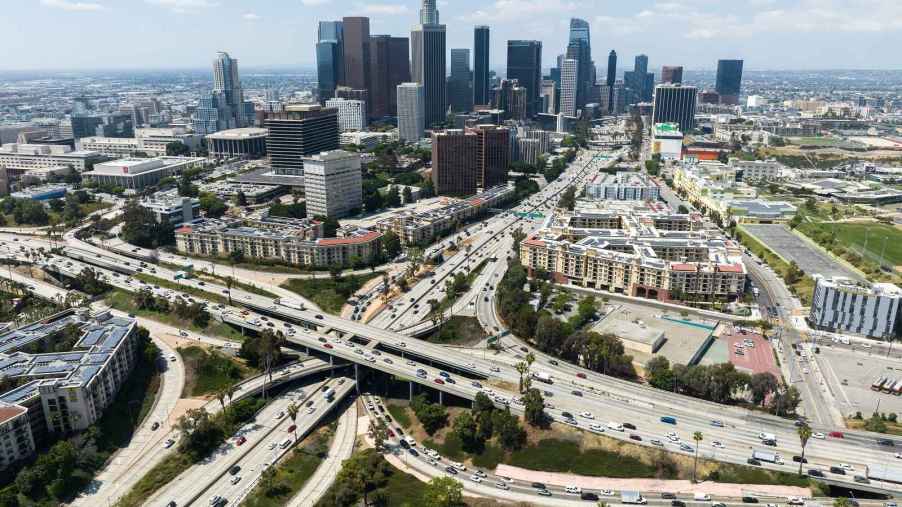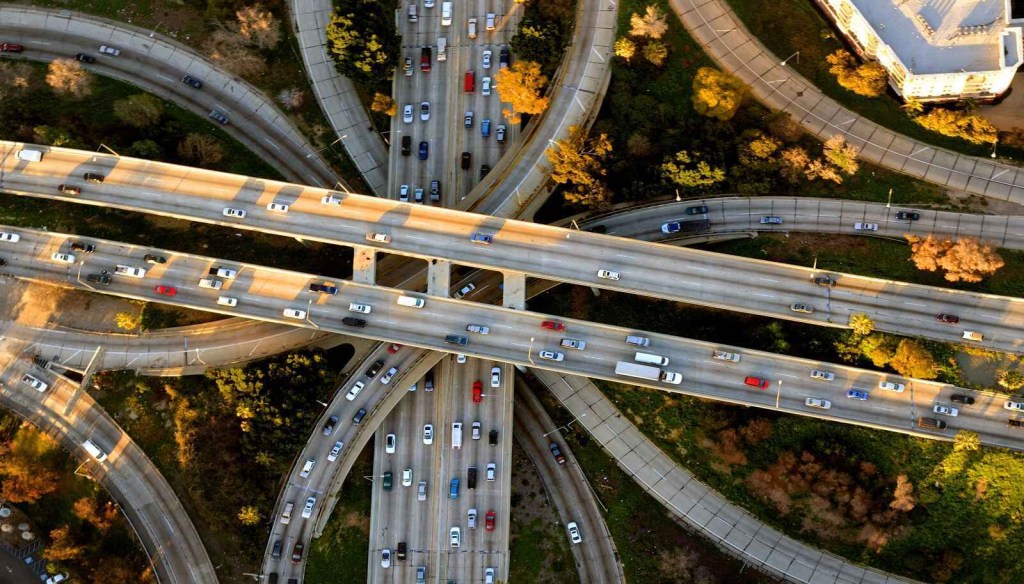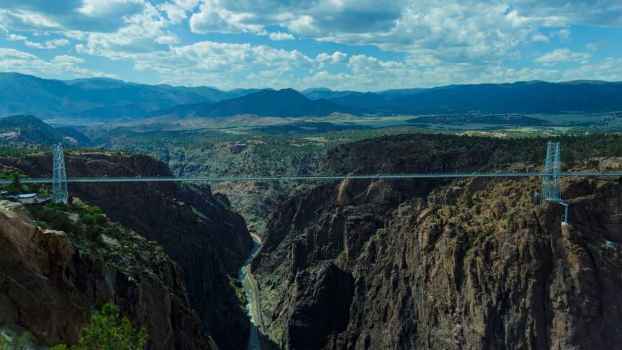
LA Has an ‘Elegant’ but Panic-Inducing Freeway Feature That Was the First of Its Kind
In the mid-1940s, plans to solve Los Angeles, California’s growing traffic problems were unveiled. LA’s Four-Level Interchange project would separate directional 101 Hollywood Freeway and 110 Harbor Freeway traffic into isolated tiers.
Five years later, in 1949, the interchange was complete. The project leveled the residential zone next to Bunker Hill. Interestingly, it wasn’t until 1953 that each of its 22 lanes and seven bridges of the Four-Level were fully opened to all driver use cases. The interchange had to wait for the completed construction of connecting Hollywood, Harbor, and Santa Ana freeways.
Heralded for its graceful design, ariel views of its cemented streamers provide a calming pendulum art vibe.

The Four-Level’s design departed from the widely used “clover” pattern. Interchanges had typically been a single level wherein all drivers – those exiting, onboarding, and arterial thru traffic – used the same lane. While less costly to build, cloverleaves could congest high-traffic zones as passenger cars became more widely adopted. Car accidents weren’t uncommon.
The Stack’s tiers are situated as follows:
- Level One: 110 drivers entering the 101
- Level Two: Main 110 artery
- Level Three: 101 drivers entering 110
- Level Four: 101 main artery
While notably more efficient than the classic clover interchange design, the Four-Level is actually panic-inducing for some motorists.
Some drivers dread the interchange, citing confusing signs and complex lane flows. One section requires drivers to quickly hop across three lanes if they’re merging from 101 Southbound to 110 Southbound and don’t intend on exiting into Downtown LA.
LA’s Four-Level Freeway Interchange is a colossal cement feature that has, by now, been duplicated in highway interchanges globally.
Source: PBS SoCal





